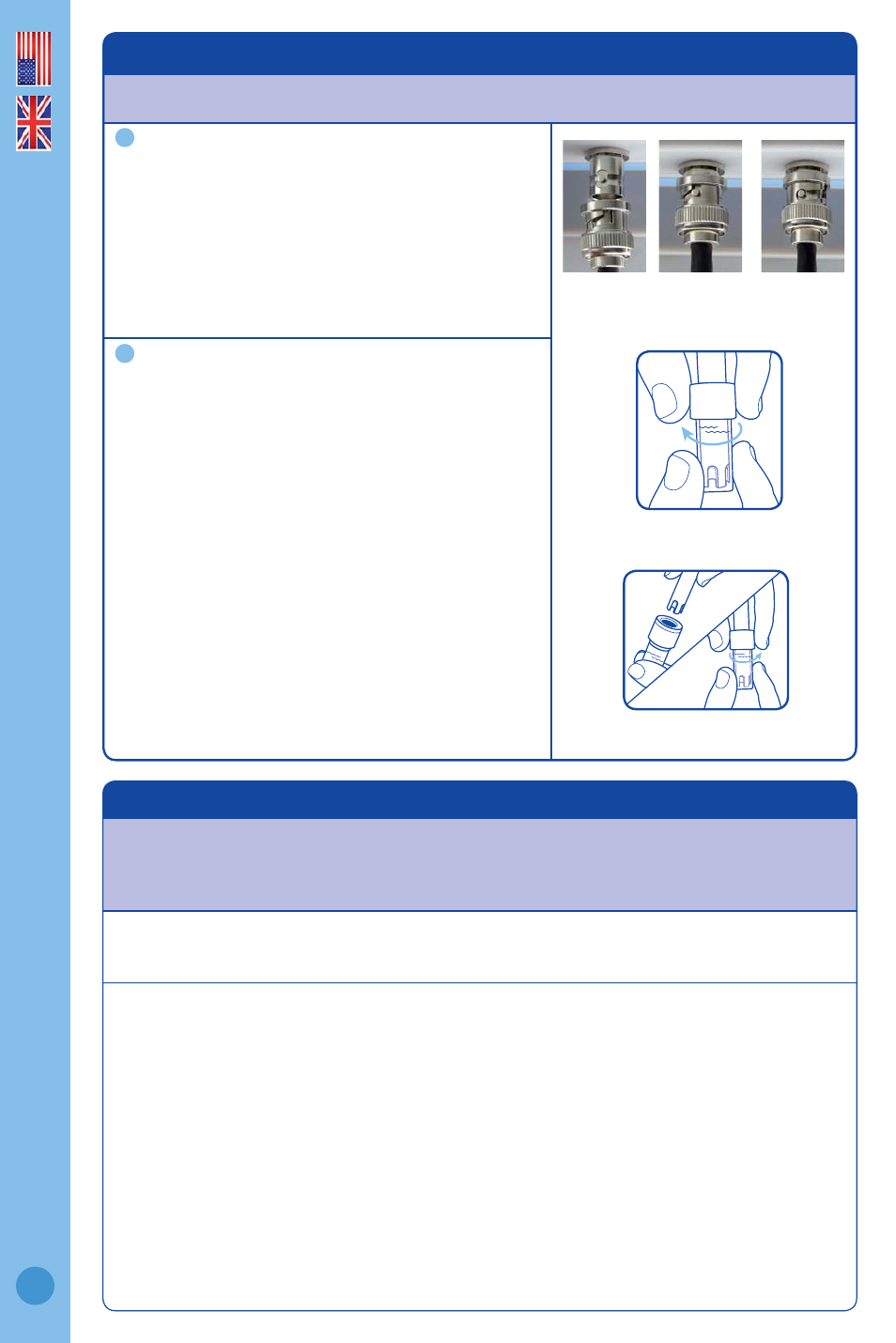Preparing for use, Important bluelab ph probe care 3, 0 preparing for use – Bluelab pH Probe User Manual
Page 3: 0 important - bluelab ph probe care, English

English
3
1.0 Preparing for use
The following tasks must be performed before the Bluelab pH Probe is used for the fi rst time.
Connect pH probe
Connect the pH probe to the meter by lining up
the lugs of the BNC fi ttings.
Fasten securely by pushing the pH probe
connector on and twisting one quarter turn.
Remove the storage cap
Remove the pH probe storage cap by gripping
the top of the cap and gently twisting the base
one rotation clockwise to loosen slightly. Next
slowly slide the cap off the pH probe. DO NOT
completely remove the base of the cap from the
top of the cap.
CAUTION: When the pH probe is not in use, add
enough Bluelab pH Probe KCl Storage Solution to
the storage cap so the probe tip is covered. Then
replace the cap and store in a secure place.
DO NOT use RO (Reverse Osmosis), Distilled
or De-ionized water. Pure water changes
the chemistry in the reference, causing the
probe to die.
1
2
Attaching the
Bluelab pH Probe to the Meter
Removing pH probe
storage cap
Ensure probe tip is covered by
the KCl storage solution in cap
Inserting
Twisting
Attached
2.0 IMPORTANT - Bluelab pH Probe care
pH probes DO NOT last forever. They age through normal use and will eventually fail. The life
time of a pH probe depends on the environment it is used in and the way that it is treated. To
receive a long life from your pH probe, please ensure you follow the guide below.
pH probes contain glass and are therefore FRAGILE. With good care, they will give a long
service life.
• ALWAYS loosen the storage cap before removing or replacing on the pH probe tip.
• DO NOT let the pH probe tip dry. IF IT DRIES IT DIES!
• DO NOT bend the probe; this will break its internal glass tube.
• DO NOT knock the probe; this will break its internal glass tube or external glass bulb.
• DO NOT plunge a cold pH probe into a hot liquid - sudden temperature changes can
crack the glass and permanently damage the probe.
• DO NOT immerse in oils, proteins or suspended solids that will leave a coating on
the glass bulb.
• DO NOT ‘kink’ or bend the lead sharply.
• DO NOT attempt to lengthen the lead on the pH probe.
• DO NOT wet the BNC connector at the end of the lead.
